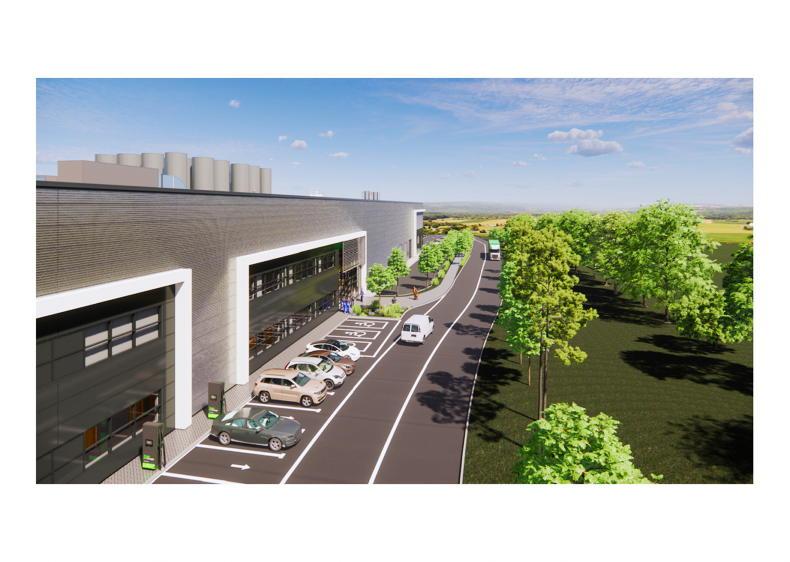There was much anticipation last week as people waited on the Government to announce its €500m package of measures to help combat the rising cost of living. The €100 that the Government committed to utility bills in January was increased to €200 (€176 excluding VAT).
This does not need to be applied for, it will be deducted from your next bill at source.
There will also be a one-off payment of €125 to recipients of the fuel allowance.
The Drugs Payment Scheme will now be capped at €80 (it was originally a maximum payment of €100 a week).
Public transport fares have been cut by 20%, although this will have more of an impact on urban dwellers.
What might make a bigger difference to rural families is that the annual charge for school transport will now be capped at €150 per year at primary school (down from €220), while at post-primary school the maximum fee will be €500 (down from €650).There will also be an increase of €10 from 1 April in the weekly income threshold for the working family payment (previously called the family income supplement).
This is all badly needed. According to EY (Ernst and Young), inflation grew 10 times faster in the last three months of 2021 compared to two years ago.
Neil Gibson, EY economist says: “Prices rose by 1% between October and December 2021. Compare this to 2019 when inflation rose by 0.1% in the same period. Furthermore, prices were 5.5% higher in December 2021 compared to December 2020, the highest increase since April 2001. Energy costs rose by over 27%, transport by 18% and rent and mortgages by 6.6%.
So what does the rest of 2022 look like? Neil says: “It is likely that higher inflation will persist in the short term as global supply chain disruption, raw material shortages, tighter labour markets and higher energy costs all provide upward pressures. This will translate into higher final prices for consumers and cause further inflation until these issues dissipate in the latter half of 2022.
Though headline inflation will fall later in the year, this is unlikely to mean price decreases and households and businesses will need to get used to this higher level of costs. Longer term, though, the elevated inflation rates will not persist, it is also very possible we will not see the return to the very low levels of inflation we had enjoyed before the pandemic.”
In saying this, Neil says they still anticipate strong consumer spending in the next months but this will not be across all sections of society.
“We do forecast strong consumer spending growth this year overall, as a result of a healthy labour market, increasing wages, pent-up demand and the deployment of aggregate savings all offsetting the impact of higher prices. However, the overall increase in consumer spending will not be experienced equally across society. Households on lower incomes will be impacted disproportionately, as necessary costs relating to housing, energy and transport rise significantly which means that the income left over to buy other staples such as food and clothing reduces.
“Difficult choices have to be made by these households as their spending power will be lower.”
Energy bills have had one of the biggest impacts on households. Throughout 2021, there were 35 price hikes across the 14 providers, an unprecedented spike that saw bills rise between 27% and 70%. In our pockets, that was an average price hike of €870 across electricity and gas bills. Some consumers saw increases of just over €300 while others saw bills rise by €1,300 depending on their provider.
The price of gas and electricity are often discussed together given that gas is used to power 40% to 60% of our country’s electricity. Although renewable energy such as wind is increasing – it provides approximately 40% of Ireland’s total electricity demand – when the price of gas goes up, as it has done internationally, that impacts our electricity bills.
What can you do?
Switching can help you save significantly. Flogas is one of the most expensive providers on the market at the moment. Let’s take a customer living in rural Ireland who uses the national average amount of gas and electricity. Currently their provider is Flogas. If they are to move to Electric Ireland EnergySaver Dual, they could be looking at saving €1,749 a year across their bills.
You may be thinking, I am already with Electric Ireland so I don’t need to switch, but remember companies do not honour loyalty.
So let’s take the same consumer. If they are already with Electric Ireland they could switch to Bord Gáis Dual Fuel and save €367. That’s because most discount deals only last for one year so you need to switch every year to get the best price.
Broadband prices have been pretty stagnant for a few years. However, in recent months, we have started to see some price increases creeping in. Eir introduced a €6 increase on most plans in September while Vodafone will be increasing its prices by 3% in April.
It’s not just broadband prices that have increased. Many people have ditched the TV box in place of streaming services but they too have risen. Last year, Netflix announced a 13% price hike. Shortly after Disney+ announced a 29% price hike to its new service. A family with both of these plans is now paying almost €324 a year, an increase of €48 a year.
What can I do?
Broadband is one of the trickier ones to switch. It all depends on your location and the services available to you, which can be limited the more rural you are. But it’s still worth looking into.
For example, Virgin Media’s Big Bundle (home phone, 250Mbps broadband and TV) costs €92 per month. If you move to Eir’s introductory offer, which includes broadband, home phone and TV package with Apple TV, you’re looking at €49.98 a month for the first 12 months. That’s a saving of €507 a year.
But the important thing to note is that those deals usually only last for one year. So if you’re with Eir at the moment and on the higher tariff, you could switch to Vodafone’s broadband, TV and home phone service. This will bring your monthly payments down to €55 for 12 months.
Health insurance
No matter who your health insurance provider is, you’re going to see increases in your policy this year. This won’t be a one-off. Across the board, we are looking at increases of 5% to 6% every year. This is due to medical inflation and it covers costs like the costs of claims rising, new technologies, robotics, new cancer drugs, new consultants, and PPE because of the pandemic. It’s also because we are an ageing population.
What can I do?
Vhi customers need to be very careful. Vhi retired 25 policies last year and if you were on one of those policies, you may have been automatically switched to another that may be around the same price but may not have the cover you want or need. So when it is time for renewal, remember the magic words: do you have a lower cost equivalent?
Some of the best family plans at the moment include:
Vhi
Adults: Company Plan Plus Level 1.3 – €1,307 per adult.Children: Enhanced Care 250 – €220 per child.Total: €3,054.Laya
Adults: Laya Inspire Plus – €1,346 Put mum, dad and the first child on this plan as Laya offers free cover to a second child under 14.Child: Flex 125 Explore – €298.Total: €2,990. Irish Life Health
Adults: Corporate Plan 4D Health 2 – €1,394 per adult.Children: Benefit Plan – €200* special offer.Total: €3,188.Currently, Irish mortgage rates are among the highest in the 19-member Eurozone. Our rate of 2.69% is over double the Eurozone average of 1.29%. Realistically, these high rates are adding over €2,100 a year to the cost of living in Ireland.
According to the BPFI (Banking and Payments Federation Ireland)in December, the average first-time buyer mortgage in Ireland is around €262,000. This means someone borrowing this amount over 30 years is paying almost €180 extra a month compared to our European neighbours.
What can I do?
Look at the type of mortgage you are paying. Switching mortgages isn’t an option for everyone, for example, if you are tied into a fixed rate or you are on a good tracker mortgage rate. However, if you’re out of your fixed rate contract and are paying 3.5%, there are options out there such as AIB’s five-year fixed rate at 2.15% which could save you €133 a month or Ulster Bank’s two-year fixed rate of 2.2%, which could save you €129 a month.
Even though rates are among the highest in Europe, they are falling so avail of these better prices.
Read more
Consumer Watch: health insurance season
Women & Ag: readers save hundreds in health insurance
There was much anticipation last week as people waited on the Government to announce its €500m package of measures to help combat the rising cost of living. The €100 that the Government committed to utility bills in January was increased to €200 (€176 excluding VAT).
This does not need to be applied for, it will be deducted from your next bill at source.
There will also be a one-off payment of €125 to recipients of the fuel allowance.
The Drugs Payment Scheme will now be capped at €80 (it was originally a maximum payment of €100 a week).
Public transport fares have been cut by 20%, although this will have more of an impact on urban dwellers.
What might make a bigger difference to rural families is that the annual charge for school transport will now be capped at €150 per year at primary school (down from €220), while at post-primary school the maximum fee will be €500 (down from €650).There will also be an increase of €10 from 1 April in the weekly income threshold for the working family payment (previously called the family income supplement).
This is all badly needed. According to EY (Ernst and Young), inflation grew 10 times faster in the last three months of 2021 compared to two years ago.
Neil Gibson, EY economist says: “Prices rose by 1% between October and December 2021. Compare this to 2019 when inflation rose by 0.1% in the same period. Furthermore, prices were 5.5% higher in December 2021 compared to December 2020, the highest increase since April 2001. Energy costs rose by over 27%, transport by 18% and rent and mortgages by 6.6%.
So what does the rest of 2022 look like? Neil says: “It is likely that higher inflation will persist in the short term as global supply chain disruption, raw material shortages, tighter labour markets and higher energy costs all provide upward pressures. This will translate into higher final prices for consumers and cause further inflation until these issues dissipate in the latter half of 2022.
Though headline inflation will fall later in the year, this is unlikely to mean price decreases and households and businesses will need to get used to this higher level of costs. Longer term, though, the elevated inflation rates will not persist, it is also very possible we will not see the return to the very low levels of inflation we had enjoyed before the pandemic.”
In saying this, Neil says they still anticipate strong consumer spending in the next months but this will not be across all sections of society.
“We do forecast strong consumer spending growth this year overall, as a result of a healthy labour market, increasing wages, pent-up demand and the deployment of aggregate savings all offsetting the impact of higher prices. However, the overall increase in consumer spending will not be experienced equally across society. Households on lower incomes will be impacted disproportionately, as necessary costs relating to housing, energy and transport rise significantly which means that the income left over to buy other staples such as food and clothing reduces.
“Difficult choices have to be made by these households as their spending power will be lower.”
Energy bills have had one of the biggest impacts on households. Throughout 2021, there were 35 price hikes across the 14 providers, an unprecedented spike that saw bills rise between 27% and 70%. In our pockets, that was an average price hike of €870 across electricity and gas bills. Some consumers saw increases of just over €300 while others saw bills rise by €1,300 depending on their provider.
The price of gas and electricity are often discussed together given that gas is used to power 40% to 60% of our country’s electricity. Although renewable energy such as wind is increasing – it provides approximately 40% of Ireland’s total electricity demand – when the price of gas goes up, as it has done internationally, that impacts our electricity bills.
What can you do?
Switching can help you save significantly. Flogas is one of the most expensive providers on the market at the moment. Let’s take a customer living in rural Ireland who uses the national average amount of gas and electricity. Currently their provider is Flogas. If they are to move to Electric Ireland EnergySaver Dual, they could be looking at saving €1,749 a year across their bills.
You may be thinking, I am already with Electric Ireland so I don’t need to switch, but remember companies do not honour loyalty.
So let’s take the same consumer. If they are already with Electric Ireland they could switch to Bord Gáis Dual Fuel and save €367. That’s because most discount deals only last for one year so you need to switch every year to get the best price.
Broadband prices have been pretty stagnant for a few years. However, in recent months, we have started to see some price increases creeping in. Eir introduced a €6 increase on most plans in September while Vodafone will be increasing its prices by 3% in April.
It’s not just broadband prices that have increased. Many people have ditched the TV box in place of streaming services but they too have risen. Last year, Netflix announced a 13% price hike. Shortly after Disney+ announced a 29% price hike to its new service. A family with both of these plans is now paying almost €324 a year, an increase of €48 a year.
What can I do?
Broadband is one of the trickier ones to switch. It all depends on your location and the services available to you, which can be limited the more rural you are. But it’s still worth looking into.
For example, Virgin Media’s Big Bundle (home phone, 250Mbps broadband and TV) costs €92 per month. If you move to Eir’s introductory offer, which includes broadband, home phone and TV package with Apple TV, you’re looking at €49.98 a month for the first 12 months. That’s a saving of €507 a year.
But the important thing to note is that those deals usually only last for one year. So if you’re with Eir at the moment and on the higher tariff, you could switch to Vodafone’s broadband, TV and home phone service. This will bring your monthly payments down to €55 for 12 months.
Health insurance
No matter who your health insurance provider is, you’re going to see increases in your policy this year. This won’t be a one-off. Across the board, we are looking at increases of 5% to 6% every year. This is due to medical inflation and it covers costs like the costs of claims rising, new technologies, robotics, new cancer drugs, new consultants, and PPE because of the pandemic. It’s also because we are an ageing population.
What can I do?
Vhi customers need to be very careful. Vhi retired 25 policies last year and if you were on one of those policies, you may have been automatically switched to another that may be around the same price but may not have the cover you want or need. So when it is time for renewal, remember the magic words: do you have a lower cost equivalent?
Some of the best family plans at the moment include:
Vhi
Adults: Company Plan Plus Level 1.3 – €1,307 per adult.Children: Enhanced Care 250 – €220 per child.Total: €3,054.Laya
Adults: Laya Inspire Plus – €1,346 Put mum, dad and the first child on this plan as Laya offers free cover to a second child under 14.Child: Flex 125 Explore – €298.Total: €2,990. Irish Life Health
Adults: Corporate Plan 4D Health 2 – €1,394 per adult.Children: Benefit Plan – €200* special offer.Total: €3,188.Currently, Irish mortgage rates are among the highest in the 19-member Eurozone. Our rate of 2.69% is over double the Eurozone average of 1.29%. Realistically, these high rates are adding over €2,100 a year to the cost of living in Ireland.
According to the BPFI (Banking and Payments Federation Ireland)in December, the average first-time buyer mortgage in Ireland is around €262,000. This means someone borrowing this amount over 30 years is paying almost €180 extra a month compared to our European neighbours.
What can I do?
Look at the type of mortgage you are paying. Switching mortgages isn’t an option for everyone, for example, if you are tied into a fixed rate or you are on a good tracker mortgage rate. However, if you’re out of your fixed rate contract and are paying 3.5%, there are options out there such as AIB’s five-year fixed rate at 2.15% which could save you €133 a month or Ulster Bank’s two-year fixed rate of 2.2%, which could save you €129 a month.
Even though rates are among the highest in Europe, they are falling so avail of these better prices.
Read more
Consumer Watch: health insurance season
Women & Ag: readers save hundreds in health insurance









SHARING OPTIONS